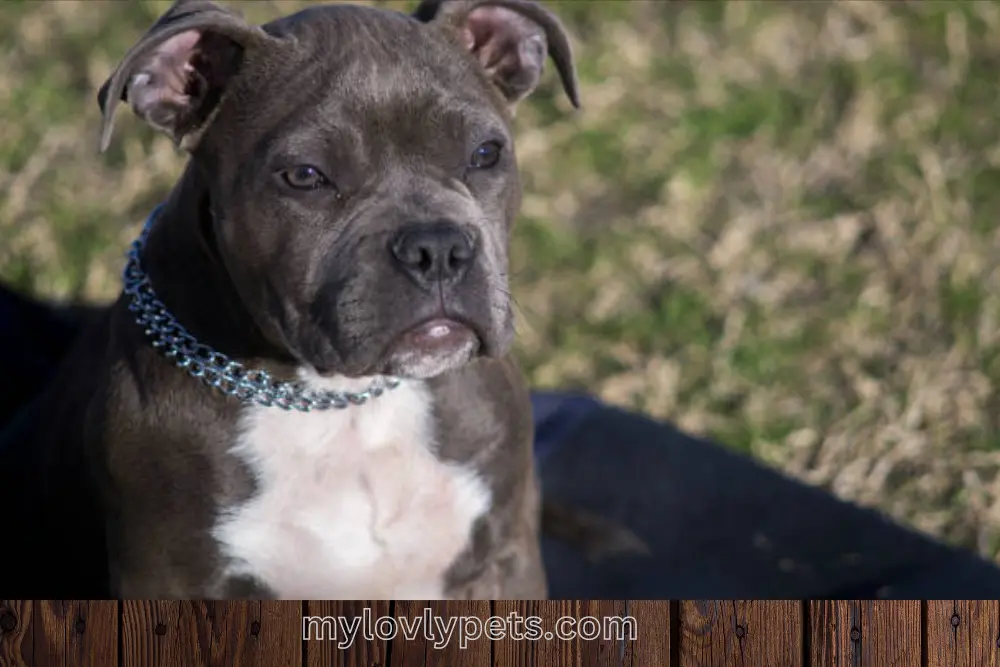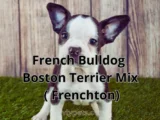
Tri Color American Bully: Exploring Their Beauty and Personality
Introducing The intriguing Tri-Color American Bully breed is easily identifiable by its unique coat color and appearance. In the world of American Bullies, their tricolor pattern stands out prominently, showcasing not one or two but three striking coat colors. These three hues come together to form a captivating visual appeal, with a primary base color, classic white, and tan points.
What makes the tricolor American Bully breed truly unique is the harmonious interplay of these three shades. The base color can vary, encompassing tones like deep black, mesmerizing lilac, rich chocolate, or timeless blue. Moreover, factors like dilution genes, intensity genes, merle, or piebald patterns can further influence their coat, making each tricolor Bully an exquisite and one-of-a-kind canine canvas.
The tricolor American Bully breed, with its unique genetic makeup and rich history, is a living example of the breed’s fascinating diversity. Because of their unique and eye-catching coat colors and patterns, these dogs are popular among dog lovers all over the world.
The Origin of The Tricolor Gene in The American Bully?
The tricolor gene in the American Bully originates from the tan point gene, which has been a part of the breed since its beginning. The gene originated from crossbreeding bulldogs and smooth fox terriers during the 1800s. The smooth fox terrier likely inherited the tan point gene from black and tan terriers in the past century. The gene flows from the American pit bull terrier to the American bully and the American Staffordshire terrier.
Tri-Color American Bullies: A Rare Beauty
Tri-Color Bullies are a distinct subset of the American Bully breed, characterized by their striking three-color coat pattern. Tri-Color Bullies are aesthetically striking because they have three distinct colors rather than just one. They have a base color, white markings, and tan tips.
What truly sets them apart is their individuality. Several breeders were reluctant to produce these stunning canines because of widespread confusion over their legitimacy.
The demand for Tri-Color Bullies, however, has been on the rise as more pet lovers discover and appreciate their special appeal.
Tri-Color Bullies are highly sought after because of their rare look and admirers of exceptional beauty. These dogs are a shining example of the fact that being different can be a virtue. Tri-Color Bullies continue to grow in popularity, and more and more people are learning about them and falling in love with them.
As well as being a visually striking and unique characteristic of the American Bully breed, tri-color bullies are a good example of how beauty can be found in the unlikeliest of places.
What Causes a Tri-Color Coat Pattern?
Tricolor patterns in American bullies are determined by genetics that impact their coat colors. Coat colors in animals are determined by two pigments: red and black, both of which are types of melanin. The pigments’ interaction is controlled by the Agouti gene series, which includes the tan point gene. The tan point gene causes tricolor coat color and standard tan points in American bullies.
For a tricolor coat, the dog needs two copies of the tan point gene (at/at), one from each parent. The tan point allele is recessive and only becomes visible when two copies are inherited. American bullies can have the gene without showing tan points.
The tan point allele creates a solid color pattern with light-colored spots, not black and tan dogs. Spots can appear on various parts of the body, such as the legs, chest, under tail, and face, but their size and distribution can vary. The tan point allele’s color is influenced by other genes at different locations.
White spots can occur on tricolored American bullies, looking the same as on bicolor or single-colored bullies. Tricolored bullies can have markings of two different colors, depending on whether the markings are on the tan point sections.
Black bullies can sometimes partially overpower the dominant black allele, causing faded tan spots called ghost tan. Tricolor patterns in American Bullies are not random, but rather the result of specific genes that have been present in American Pit Bull Terrier bloodlines.
How Do You Know If Your Bully is Tri?
To identify a genuine Tri-Color Bully, specific criteria are integral to their unique coat coloring, setting them apart from other breeds. These criteria encompass various distinct attributes that make the Tri-Color Bully stand out in the world of canine companions.
- Tricolor Coat: The most prominent and defining characteristic of a Tri-Color Bully is their tricolor coat. This distinctive coat features a harmonious blend of three distinct colors: a primary base color, tan points, and striking white markings.
- Base Color: The base color, as the foundation of the coat, can take on various shades, including blue, black, lilac, or brown. This primary hue provides the canvas upon which the other colors are beautifully displayed.
- Tan Points: The inclusion of tan points is crucial in achieving the tricolor effect. These tan markings are usually observed on specific areas like the eyebrows, muzzle, chest, legs, and the tail. The visibility of these tan points is an essential hallmark of a genuine Tri-Color Bully.
- White Markings: White markings, which frequently adorn the chest, neck, and other areas of the coat, are another integral component of the tricolor coat. However, it’s important to note that the absence of white markings disqualifies a dog from being classified as a Tri-Color Bully.
- Coat Patterns: Tri-Color Bullies can exhibit an array of unique coat patterns, further enhancing their individuality. These patterns can include creeping tan, trindle, ghost tan, tri merle, ticked tri, or piebald tri, each contributing to their distinctive appearance.
- Genetic Factors: The presence of specific genes, most notably the tan point gene (at/at), plays a crucial role in achieving the desired tricolor coat. Both parents must carry this gene for it to be expressed in their offspring, ensuring the unmistakable tricolor look.
- Health Considerations: Importantly, there are no health concerns or risks directly associated with the tricolor coat pattern. Tri-Color Bullies do not face any additional health challenges as a result of their unique coloring.
What Is the Temperament of a Tricolored American Bully?

American Bully Puppy in a Park
Personality and Temperament:
General Characteristics: American Bullies are highly regarded for their gentle and affectionate nature, which makes them excellent companions for families. Key defining characteristics include their loyalty, tolerance, and friendly disposition.
Intelligence and Fearlessness: These dogs possess exceptional intelligence and fearlessness, making them excellent guard dogs while also being friendly companions.
American Bullies are highly adaptable and versatile, making them well-suited for a variety of tasks and a great addition to any family.
Training and Socialization: It is crucial to emphasize the importance of training and socialization in order to nurture their ideal temperament. An unwavering, assertive owner is crucial to steer their behavior.
Establishing a clear pack hierarchy and setting firm rules through training is crucial for cultivating a harmonious relationship.
Why Tri-Colored American Bullies Are Rare
Tricolored American Bullies are considered to be a rare breed due to a deliberate avoidance of breeding them by many breeders over multiple generations. The prevailing belief that tricolored dogs are mixed breeds has led to a perception of undesirability among certain individuals.
Mixed-breed bullies are typically avoided by breeders since they prefer to produce purebred bullies with impressive pedigrees. Additionally, breeders prioritize game skills over coat color, focusing on the qualities of the original bully sires, the American Pit Bull Terrier, and the American Staffordshire Terrier.
The American Bully gene pool hardly ever yields tricolor bullies, despite deliberate breeding efforts. It is important to note that there are no health issues associated with the tricolor coat pattern, and it does not harm the health of the American Bully.
Factors Affecting Tricolor Offspring in American Bullies
When it comes to tricolor American Bullies, the inheritance of their unique coat colors is determined by a combination of genetics and parentage.
For tricolor pups to be born, it is essential that both parents have the recessive tan point gene. This gene is essential for the formation of those captivating tricolor patterns. Nevertheless, the existence of this gene does not guarantee the appearance of the remarkable tan markings.
There are additional genetic factors that contribute to the expression of tan points. The Dominant Black gene has a knack for overshadowing the tan points, making them entirely disappear. Furthermore, the visibility of those tan marks can be influenced by the presence of the Recessive Red gene.
It’s crucial to take into account the intricate interactions between these various genetic components, rather than solely fixating on the presence of the tan point gene. Consider it a puzzle, where every piece adds to the stunning tricolor palette seen in these American Bullies.
The mesmerizing coat patterns that set tricolor American Bullies apart are a product of the complex genetic interplay and numerous factors involved.
What Is the Size of The Tricolored American Bully?
American Bullies are a versatile breed, known for their diverse sizes and types. These variations include:
| Type of American Bully | Weight Range | Height Range | Details |
| Pocket Bullies | 20 – 25 lbs | 14 – 17 inches | Compact and portable, known for their smaller size. |
| XL Bullies | 85+ lbs | 20 – 23 inches | Extra-large and robust, recognized for their massive build. |
| Standard Bullies | 60 – 85 lbs | 17 – 20 inches | The most common size, is known for its balanced proportions. |
| XXL Bullies | > 23 inches | Exceptionally tall, but not officially recognized due to potential health concerns. |
also read: American Pocket Bully Exploring the Fascinating World
Factors To Consider Before Buying Tricolor American Bully
| Type of American Bully | Average Cost | Description |
| Show Quality & Breeding Stock | $5,000 – $10,000+ | Top-tier American Bully puppies, often from champion bloodlines. Ideal for breeding and may participate in dog shows. |
| Pet Quality with Registration | $2,500 | American Bully puppies suitable as pets, come with registration paperwork. Good quality but may not meet show standards. |
| Pets without Papers | $500 – $1,500 | American Bully puppies without registration papers. Typically considered pets and may not have documented pedigrees. |
Are Tan Point Genes Linked to Any Health Issues?
The expression of tan point genes is what gives a tri-color bully its unique appearance. It’s important to note that these genes are recessive, meaning they can be easily overshadowed by more dominant genes.
In various cases, such as the merle gene recessive genes can be linked to potential health concerns.
Fortunately, it is important to note that while the tan point gene is recessive, it does not imply any potential health concerns.
American bullies can undoubtedly inherit a few diseases, but just because a bully is tri-colored doesn’t mean it is more likely to have health problems.
Are Tricolor Bullies Distinct From Other Bullies?
Tricolored and single/bicolor American bullies differ solely in their physical appearance. Tricolor coat patterns are found in all dog breeds. Personality and temperament are essentially the same.

American Bully Dog sitting on the grass.
The American Bully remains a friendly and peaceful companion, regardless of coat color or pattern. Ultimately, the decision to own a tricolor or normal bully rests on your personal aesthetic preference.
The tri-colored American Bully is a stunning and tolerant companion, perfect for your family. These American bulldogs require the same level of care as single- and bi-colored bulldogs.


